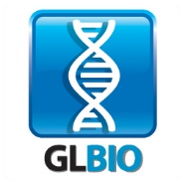Posters
Preparing your Poster - Information and Poster Size
Poster Schedule
Print your poster in Chicago
Poster Categories
View Posters By Category
Session A: (July 7 and July 8) | Session B: (July 9 and July 10) |
|---|---|
Short Abstract: Polymer-based simulations and experimental studies indicate the existence of a spatial dependency between the adjacent DNA fibers involved in the formation of chromatin loops. However, the existing strategies for detecting differential chromatin interactions assume that the interacting segments are spatially independent from the other segments nearby. To resolve this issue, we developed a new computational method, FIND, which considers the local spatial dependency between interacting loci. FIND uses a spatial Poisson process to detect differential chromatin interactions that show a significant difference in their interaction frequency and the interaction frequency of their neighbors. Simulation and biological data analysis show that FIND outperforms the widely used count-based methods and has a better signal-to-noise ratio.
Short Abstract: Broad domain promoters and super enhancers are regulatory elements that govern cell-specific functions and harbor disease-associated sequence variants. These elements are characterized by distinct epigenomic profiles, such as expanded deposition of histone marks H3K27ac for super enhancers and H3K4me3 for broad domains, however little is known about how they interact with each other and the rest of the genome in three-dimensional chromatin space. Using network theory methods, we studied chromatin interactions between broad domains and super enhancers in three ENCODE cell lines (K562, MCF7, GM12878) obtained via ChIA-PET, Hi-C, and Hi-CHIP assays. In these networks, broad domains and super enhancers interact more frequently with each other compared to their typical counterparts. Network measures and graphlets revealed distinct connectivity patterns associated with these regulatory elements that are robust across cell types and alternative assays. Machine learning models showed that these connectivity patterns could effectively discriminate broad domains from typical promoters and super enhancers from typical enhancers. Finally, targets of broad domains in these networks were enriched in disease-causing SNPs of cognate cell types. Taken together these results suggest a robust and unique organization of the chromatin around broad domains and super enhancers: loci critical for pathologies and cell-specific functions.
Short Abstract: Deciphering the detailed mechanisms governing gene regulation often requires 3-D reconstruction of the chromatin fold. Chromosome conformation capture techniques such as 3C/Hi-C provide insight into the chromatin folding state but may only give averaged spatial information in the form of 2-D contact heat maps. Using these techniques alone, it is difficult to answer important questions such as: quantification of functional cellular sub-populations, identification of the cause-effect relationships among the spatially interacting genomic regions, and discovery of driver interactions governing chromosome folding. We present CHROMATIX (CHROMATin mIXture), a Bayesian method based on a physical model of chromatin folding which provides probabilistic answers to these questions. We demonstrate our method on an example TAD locus.
Short Abstract: Originally, HiC data has been used to predict A/B compartments and sub-compartments. Genomic regions falling into the same compartments (or sub-compartment) are more likely to interact with each other compared to regions falling into different compartments. It has been reported that compartments (or sub-compartments) show distinct genomic and epigenomic features. We present CompartmentExplorer, the first method that predicts genomic compartments from ChIA-PET data and sub-compartments from HiC and ChIA-PET data. In addition to traditional A/B compartment prediction method, CompartmentExplorer implements an efficient method based on graph-embedding followed by k-means clustering to predict sub-compartments from 3D genome data. Using CompartmentExplorer, we show that combined ChIA-PET data from CTCF and RNAPII factors can be utilized to predict A/B compartments with comparable accuracy to HiC data (91% agreement). Further, we compared CompartmentExplorer sub-compartment predictions with 3 different methods based on hidden Markov models (HMMs), K-means clustering, spectral clustering. Using different validation techniques, including network centrality measures, and functional assessment by epigenome and transcriptome data, we show CompartmentExplorer outperforms other methods. For instance, CompartmentExploere shows significantly (p-value <2.2e-16) lower closeness centrality and higher betweenness centrality within each sub-compartment than other methods. CompartmentExpolorer provides the most distinct epigenetic and transcriptomic profiles to different sub-compartment.
Short Abstract: Cell-type-specific variation in chromosome conformation may be related to biological function. However, the specific loci that drive this variation have not been identified. Metrics for comparing Hi-C experiments either calculate global measures of similarity between experiments or identify differential pairwise contact frequencies. However, there is currently no method for identifying locus-specific changes in localization. We developed a method, MultiMDS, to simultaneously infer and align 3D structures inferred from two Hi-C datasets. The output of the method is two aligned 3D structures, which are used to calculate locus-specific changes between the datasets. By applying MultiMDS to Hi-C data from GM12878 and K562, we quantified the degree to which cell-type-specific structural changes occurred along the A/B compartment axis, representing the nuclear interior/nuclear periphery axis. On average 42% of changes occurred along this axis (compared to 33% expected by chance), demonstrating the importance of lamina-associated repression in cell type identity. Focusing on changes within the A compartment, we found that loci that undergo intra-compartment changes were enriched for enhancers in one or both cell types. For loci with a cell-type-specific enhancer, we found that loci in the cell type that lacks the enhancer gain interactions with loci enriched for polycomb repression.
Short Abstract: Hi-C sequencing technology provides key insights into the 3D structures of the human genome. Although peak detection from Hi-C experiments is a well-studied problem, quantitative comparison of Hi-C (often referred as "differential (interaction) analysis" problem) across different cellular conditions largely depends on methods borrowed from RNA-seq data analysis. Such comparisons have critical shortcomings involving testing a large collection of hypotheses in large-scale Hi-C studies. As a result, these existing strategies for detecting differential interactions fail to control the rate of false discovery for reported findings in many simulations and experimental Hi-C studies, hindering their comparative analysis. Here, we present TreeHiC, the first hierarchical testing procedure for quantitative comparison applied to Hi-C. We demonstrate that this framework can detect differential interactions while assuring control of the FDR in complex large-scale Hi-C studies under a wide range of settings. It also is considerably more powerful than existing methods, especially in sparse testing problems where number of hypotheses could be millions with a weak signal-to-noise ratio. Additionally, while the current version of TreeHiC implements methodology pertaining to Hi-C differential analysis, it is easily extendable for other similar data such as ChIA-PET and HiChIP. TreeHiC is open source, and can be downloaded from \url{https://github.com/duydnguyen/TreeHiC}.
Short Abstract: Three dimensional organization of the genome is emerging as an important determinant of cell-type specific expression and is implicated in many diseases, including cancer. Hi-C is a type of high-throughput chromosome conformation capture (3C) assay used to study three-dimensional organization of the genome. Analysis of Hi-C data has shown that the genome is organized into higher-order organizational units such as compartments and topologically associated domains (TADs). We present a non-negative matrix factorization approach, commonly used for clustering and dimensionality reduction, to infer clusters of regions from Hi-C data. To preserve the spatial dependency of Hi-C data (i.e. closer regions interact more with each other), we impose regularization on NMF with the nearest-neighbor graph of each genomic loci. Our results show that NMF and graph-regularized NMF are both important to discover clusters that exhibit a significant association with the presence of CTCF binding at the cluster boundaries and are robust to simulated sparsity and lower sequence depth.
Short Abstract: Phenotypic heritability of complex traits and diseases is seldom explained by individual genetic variants. Many methods have been developed to select a subset of variant loci, which are associated with or predictive of the phenotype. Selecting SNPs that are close on SNP-SNP networks have been proven successful in finding biologically interpretable and predictive SNPs. However, we argue that the connectedness constraint favors selecting redundant features that affect similar biological processes and therefore does not necessarily yield better predictive performance. In this paper, we propose a novel method called SPADIS that favors the selection of remotely located SNPs that are associated with the phenotype. This is achieved by maximizing a submodular set function with a greedy algorithm that ensures a constant factor (1 − 1/e) approximation. We compare SPADIS to the state-of-the-art method SConES, on a dataset of Arabidopsis Thaliana. SPADIS has better average phenotype prediction performance in 15 out of 17 phenotypes when same number of SNPs are selected, it identifies more candidate genes and runs faster. We investigate the use of Hi-C data to construct SNP-SNP network in the context of SNP selection problem for the first time and it yields consistent improvements in regression performance.
Short Abstract: Topologically associating domains (TADs) are essential in constraining the activity of transcriptional regulatory elements. Previous studies have observed that changes in TADs structures are associated with altered transcriptional outcome, suggesting that architectural changes may play an important role in regulating gene expression. Identification of differential TADs structures across conditions will provide insights on condition-specific regulatory mechanisms, helping identify potential pharmacologic targets. However, so far little work has been done on detecting differential TADs structures. Here we present a novel statistical method that can accurately and quickly uncover differential TADs structures from Hi-C data. Through a systematic evaluation, we show that our method outperforms the existing methods. To validate the identifications, we applied our method to a Hi-C dataset obtained from a knockout experiment that depleted a critical transcription regulator that co-localizes with CTCF, and identified the changes in TADs structures between the wild type and the knockout. Our results show that the identified differential TADs structures correspond well with the depleted sites, confirming the biological relevance of our identifications. We further used our methods to study the differentiation of TADs and its relationship with gene expression for two cell lines in the hemopoiesis lineage. It reveals interesting biological insights.












